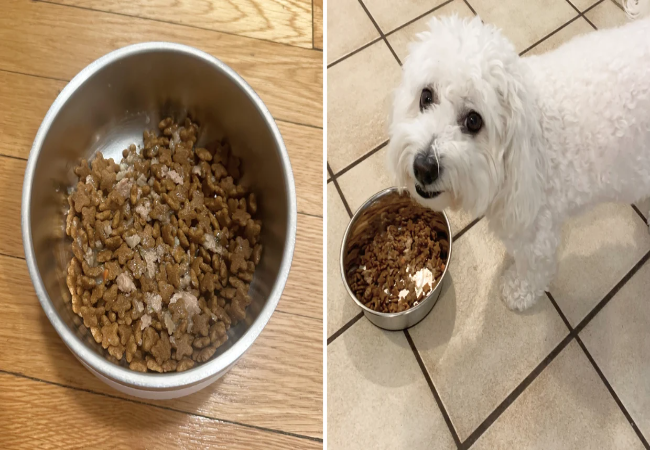Choose the Best Dog Food 2025: Vet Tips for Balanced Nutrition 🍽️🐶

In this article
Choose the Best Dog Food 2025: Vet Tips for Balanced Nutrition 🍽️🐶
By Dr. Duncan Houston BVSc
Choosing the right dog food isn’t just about picking a bag off the shelf—it’s ensuring your furry friend gets balanced, life-stage appropriate nutrition. As a veterinarian, I guide you through AAFCO standards, labels, ingredient quality, and transition strategies so you can feel confident feeding your dog well.
✅ 1. Look for AAFCO Nutritional Adequacy Statements
The easiest way to ensure a food is complete and balanced is to check for an AAFCO statement on the label, like:
- “Formulated to meet the AAFCO Dog Food Nutrient Profiles for life stage.”
- “Animal feeding tests using AAFCO procedures substantiate that this food provides complete and balanced nutrition for life stage.”
Life stage categories include growth & reproduction, adult maintenance, or all life stages. This means the food has been vetted against nutrient standards set by the AAFCO panel.
🔍 2. Understand the Guaranteed Analysis & Ingredient List
AAFCO approval doesn’t guarantee ingredient quality. Look for:
- High-quality protein sources prioritized early in the list
- Named fats like “chicken fat”—avoid vague terms like “animal fat”
- Whole-food ingredients: meat, rice, vegetables over by-products
- Essential nutrients: omega-3s for skin and brain, calcium/phosphorus for bone health
Labels using terms like "salmon & rice" suggest the diet is at least 95% that ingredient.
👶 3. Match Food to Life Stage & Size
Different life stages and breed sizes have unique nutritional needs:
- Puppies: Require higher protein (≥22.5%) and fat (≥8.5%) with balanced calcium and DHA for bone and brain development.
- Adults: Maintenance formulas balanced for calories and nutrient density; may include weight management options
- Large-breed dogs: Require specific ratios of calcium/phosphorus to reduce risk of orthopedic issues
🧩 4. Evaluate Special Diets Carefully
Grain-free, hypoallergenic, or raw diets should be chosen with vet guidance:
- Hypoallergenic: Limited-ingredient or novel proteins to manage sensitivities
- Grain-free: Should still meet AAFCO profiles—but some have been linked to heart conditions
- Raw/freeze-dried: Can retain nutrients, but risk contamination and must be carefully formulated
Always confirm any special diet meets AAFCO standards.
🔄 5. Transition Food Slowly & Monitor
Sudden food changes can cause upset stomachs. Transition over 7 days:
- Days 1–2: 25% new + 75% old
- Days 3–4: 50% new + 50% old
- Days 5–6: 75% new + 25% old
- Day 7: 100% new food
Watch for loose stools, vomiting, or allergies like itching and adjust accordingly.
🌟 6. When to Consult Your Vet or Nutritionist
Seek professional guidance if your dog has:
- Chronic GI issues or allergies
- Food sensitivities or weight difficulties
- Medical conditions requiring therapeutic diets (kidney, heart, liver)
- Breed-specific needs—especially giant breeds or working dogs
🛒 7. Vet-Recommended Feeding Tools
- Ask A Vet App: Fast help selecting foods, diagnosing intolerance, and managing diets
📌 Final Takeaways
- Always start with AAFCO-approved foods for the right life stage
- Prioritize quality ingredients and transparent labels
- Match nutrition to age, size, and health needs
- Transition thoughtfully and monitor for reactions
- Reach out to your vet for tailored dietary plans and problems






